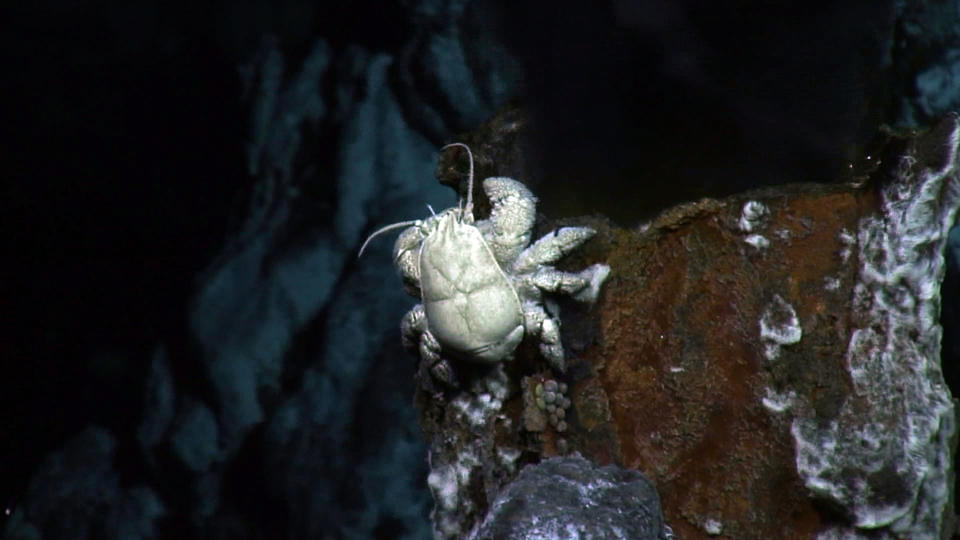Revealed: The private life of the crab named after David Hasselhoff

A species of crab nicknamed after David Hasselhoff because of its hairy chest spend largely separate lives from the females, according to new research.
A study looking at the private life of the deep-sea crab known as the "Hoff" has found that the males and females spend separate lives at volcanic vents 1.5 miles deep near Antarctica, because of the conflicting demands of feeding and raising young among the sexes. Source: PA.
In 2010, a British expedition revealed a "lost world" of deep-sea animals including the crab named after the Baywatch star thriving on the ocean floor near Antarctica.
Using a deep-diving remotely operated vehicle (ROV) to examine the distribution, size and sex of these crabs at the vents, Dr Leigh Marsh and colleagues from the University of Southampton have now pieced together their private lives.
Dr Marsh said: "The life cycles of deep-sea animals have been largely hidden from us until now but thanks to more frequent expeditions and advances in technology, we are getting a clearer picture of the natural history of the ocean depths that cover most of our world."

The researchers found that large male Hoff crabs live highest on the mineral spires of the deep-sea vents, closest to the hot fluids that jet from them.
A university spokesman said: "At the base of the mineral spires, smaller males mingle with females in spectacular piles, many crabs deep, where they get together to mate.
"The females then crawl away from the bustling piles of crabs and the warm mineral-rich fluids seeping from the seafloor, which can be toxic to their young.
"Away from the mineral spires, the few crabsfound by the researchers were all females, carrying developing offspring under their curled-up tails.
"Moving away from the warmer waters of the spires takes the females across a gauntlet of predators, such as large sea anemones and seven-arm sea stars.
"Away from the vents, the cold water of the deep Antarctic also slows down the metabolism of the adult female crabs, making them less active than in the warmer waters of the jostling piles.
"However, the conditions away from the vents may be more stable and less harmful to their offspring for their early development, making the journey of the females worthwhile.
"Males, meanwhile, don't share in 'child-care' arrangements with the females, and instead can climb up the mineral spires of the vents to take advantage of the warmth and conditions best suited for growing bacteria on their hairy chests.
"By scraping off and eating these bacteria using comb-like mouthparts, the males can grow much larger than the females."
Study co-author Dr Jon Copley said: "Deep-sea vents are island-like habitats on the seafloor, and discoveries like these show that our exploration of the life that thrives around them has only just begun."
The study is published in the Journal of Animal Ecology.
Related articles
Epic crab versus octopus battle caught on video
Crabs escape on flight, causing delays





